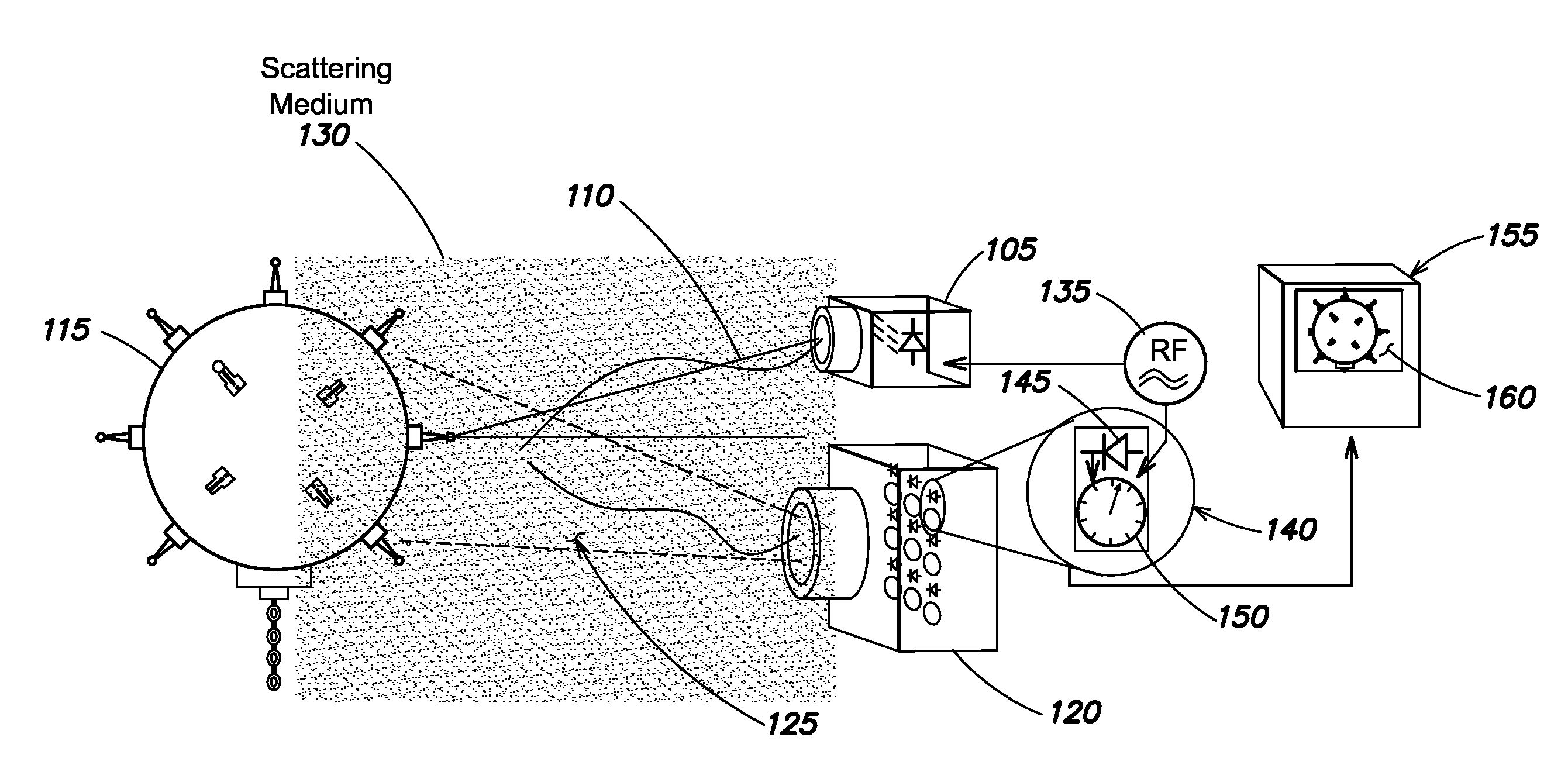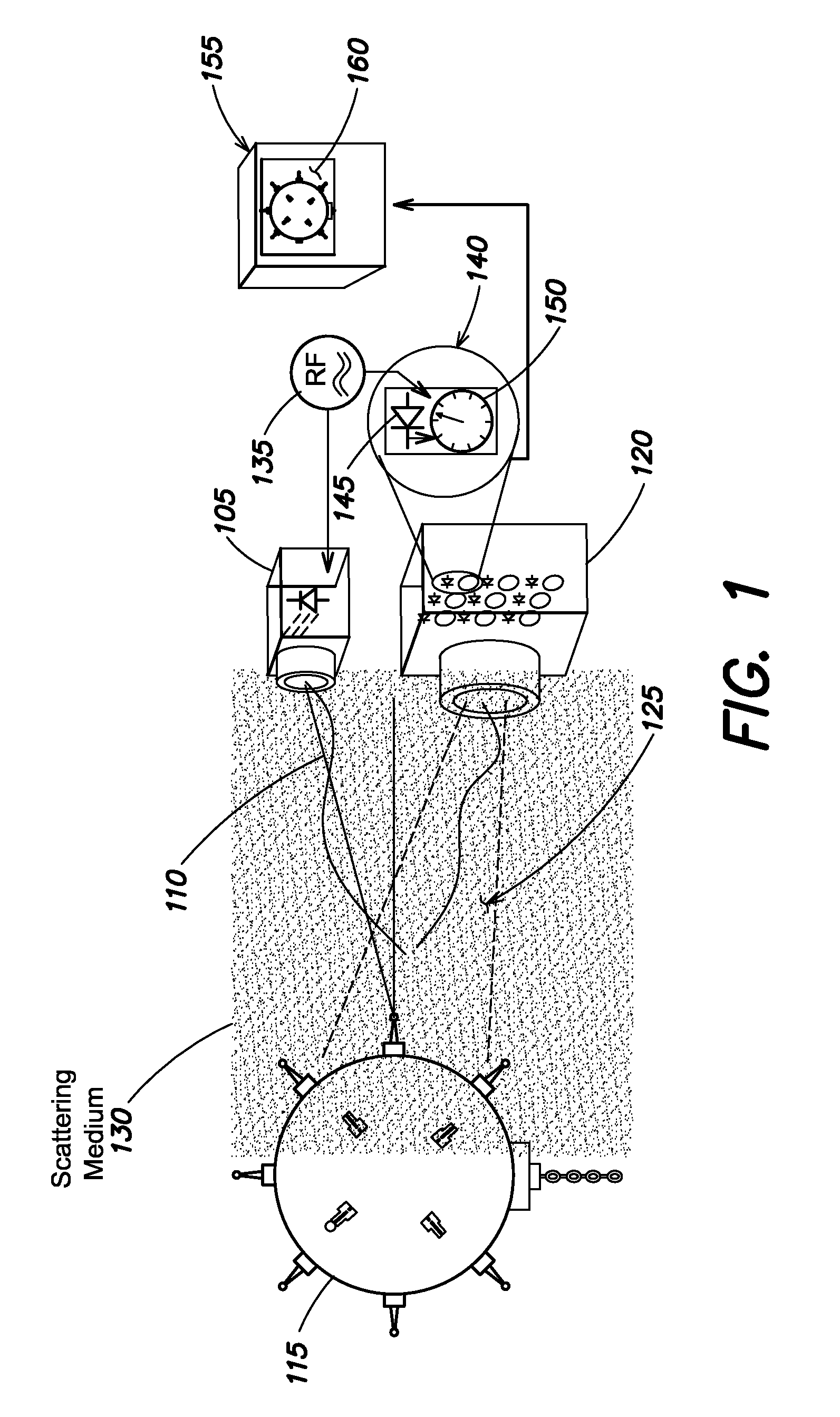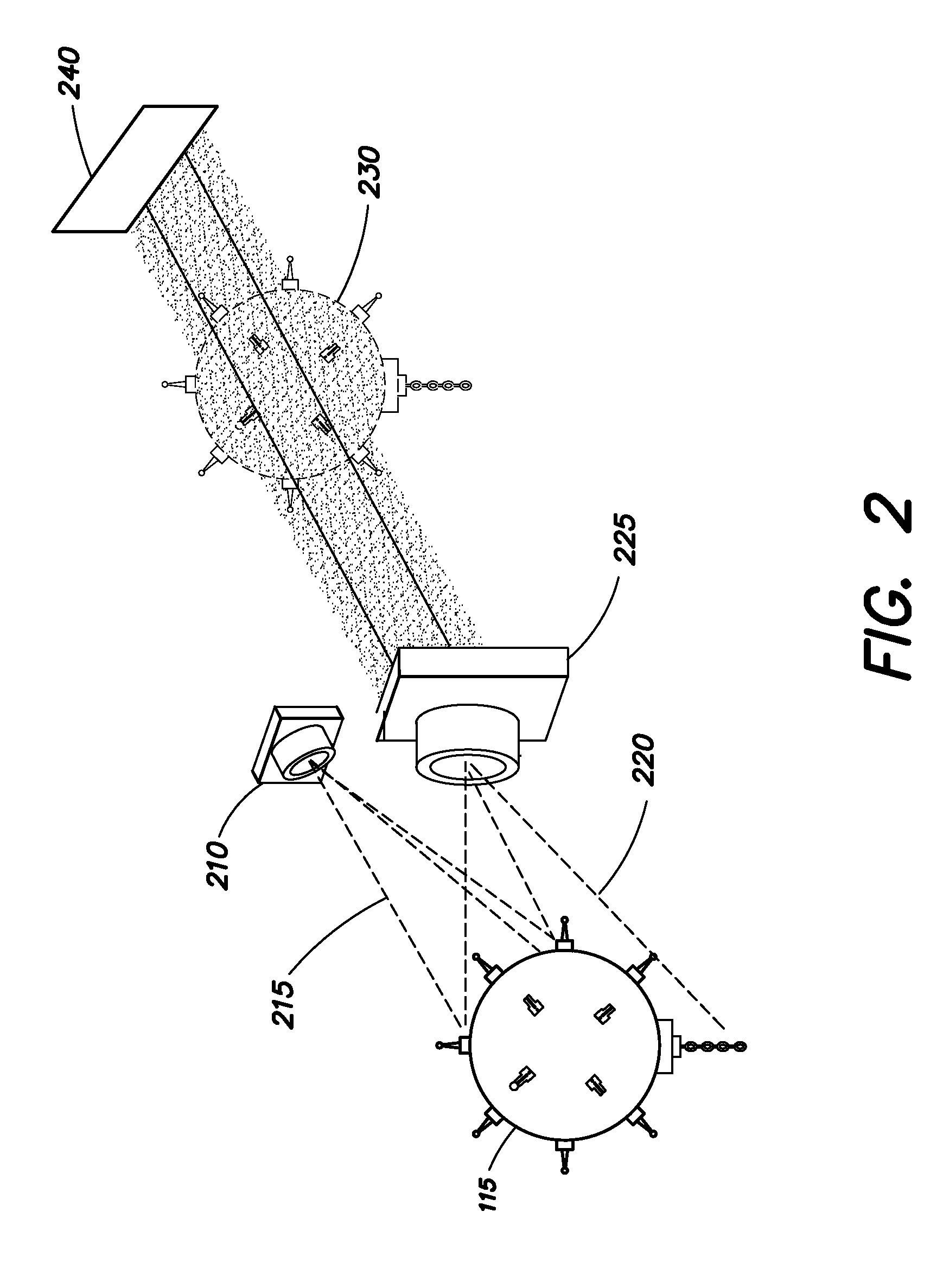Methods and apparatus for imaging in scattering environments
a scattering environment and imaging method technology, applied in the field of methods and apparatus for imaging in scattering environments, can solve the problems of limited success, high cost, complex and/or complex imaging techniques through scattering media in either air or water, and conventional systems do not provide color images of objects, etc., and achieve the effect of limited success
- Summary
- Abstract
- Description
- Claims
- Application Information
AI Technical Summary
Benefits of technology
Problems solved by technology
Method used
Image
Examples
Embodiment Construction
[0013]Near-object underwater inspection is an area of increasing interest for several applications, including in mine clearance with unmanned underwater vehicles (UUV). These and other underwater imaging systems typically include a single visible-spectrum optical sensor. As discussed above, one challenge to the successful use of these optical sensors results from the turbidity or cloudiness of the water. General sources of turbidity generally include small particulates, microscopic marine fauna and flora and other suspended particles in the water column. Light that is scattered from the entire volume of water (referred to herein as “out-of-plane scatter”) creates poor signal-to-noise ratio (S / N) optical images, or requires that the sensor be proximal to the object being inspected. These are challenges to both qualitative and quantitative analysis and characterization of underwater objects.
[0014]Accordingly, aspects and embodiments are directed to systems and methods for imaging obje...
PUM
 Login to View More
Login to View More Abstract
Description
Claims
Application Information
 Login to View More
Login to View More - R&D
- Intellectual Property
- Life Sciences
- Materials
- Tech Scout
- Unparalleled Data Quality
- Higher Quality Content
- 60% Fewer Hallucinations
Browse by: Latest US Patents, China's latest patents, Technical Efficacy Thesaurus, Application Domain, Technology Topic, Popular Technical Reports.
© 2025 PatSnap. All rights reserved.Legal|Privacy policy|Modern Slavery Act Transparency Statement|Sitemap|About US| Contact US: help@patsnap.com



